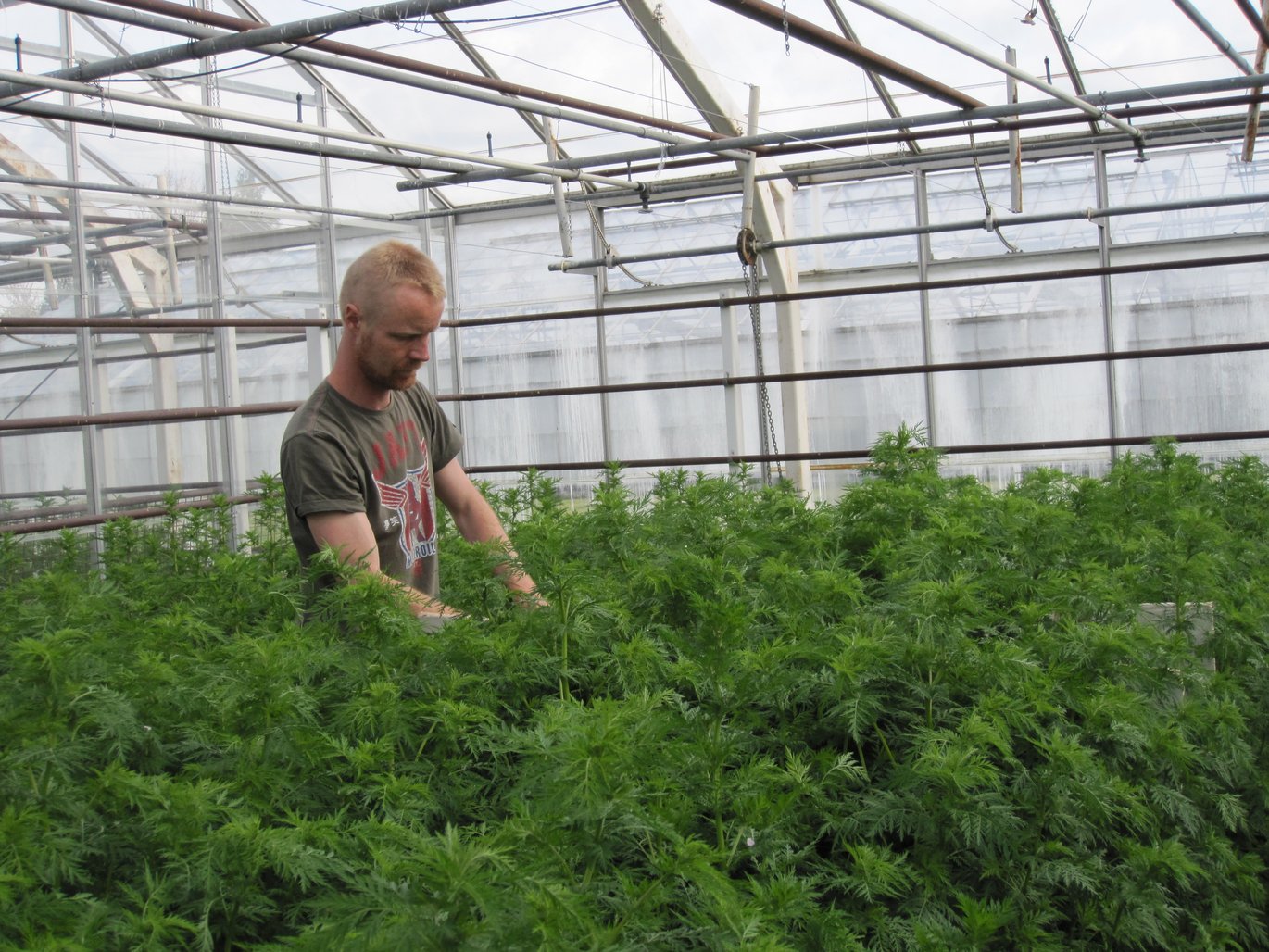Plants stressed in the fight against malaria
Sweet wormwood is one of the world’s most important medicinal plants. Researchers from Aarhus University have investigated whether the plant can be made to produce more of the bioactive compound artemisinin by stressing the plant.

Sweet wormwood (Artemisia annua) is one of the most important medicinal plants in the fight against malaria and a number of other diseases, and has been used in China for millennia. In the beginning of the 1970s it was discovered that one of the plant's bioactive compounds, artemisinin, was capable of killing the malaria parasite. Researchers at Aarhus University are investigating methods to induce the plant into producing greater quantities of the bioactive compound.
The production of sweet wormwood for the purpose of extracting artemisinin occurs on a grand scale. Globally, sweet wormwood is the most highly farmed medicinal plant by area.
The plant only contains small quantities of artemisinin, however. The content has been increased through selective breeding, but even in the enhanced plants, artemisinin only makes up approximately one per cent of the dry matter content.
- With normal crops it is possible to increase the yield by applying more fertilizer. Earlier investigations have shown that this strategy does not necessarily work when it comes to increasing the yield of a defensive substance. The plants become 'lazy' and instead produce less of the defensive compound, explains Ph.D. student Anders Kjær from Aarhus University.
A better understanding of the biological mechanisms behind the production of artemisinin could pave the way to an increase in the yield. Researchers at Aarhus University have therefore investigated whether, by stressing the plant, it could be coaxed into producing more artemisinin.
- Artemisinin is a defence substance that sweet wormwood produces to defend itself against its enemies. Our hypothesis was that, by stressing the plant, we would be able to make it produce more of the defence substance, says Anders Kjær.
Sand, salt and salicylic acid
The defensive substance is produced in small blisters on the leaves of the plant, the so-called leaf glands. When the plant is touched, the blisters break and send up a cloud of the defensive substance. The number of blisters on the leaves determine how much defensive compound is produced. Earlier investigations carried out on small, young plants showed that the stressed plants would produce more defensive substance.
Tests carried out on young plants under laboratory conditions are one thing; tests on mature plants in field conditions are another. In order to mimic the conditions present in the real world, Anders Kjær decided to carry out his tests with adult plants.
He did not restrain himself when attempting to stress the plants. In one of the experimental conditions the plants were sandblasted in order to mimic the effect of being eaten by an insect. Another group was stressed with salt, and in a third they were exposed to signal substances such as hydrogen peroxide and salicylic acid.
Stress is not the answer
Similarly to previous tests, the stressing effects managed to induce the upper, newer leaves to produce slightly more artemisinin. However the downside was that the lower, older leaves defended the plant against the stress effects by firing their load of defensive compounds. The blisters on the plant burst and a cloud of artemisinin was released into the air. The result was fewer blisters on the leaves and less artemisinin left in the plant. The more the plant was stressed, the more blisters burst and the more artemisinin was released and spent.
Anders Kjær also discovered that the individual gland seemingly always produced the same amount of artemisinin and could not be coaxed into producing more. Increased stress on the plant is thus apparently not the way to go in order to increase artemisinin production – quite the contrary.
- Another way could be to protect the plant in such a way that as few blisters as possible burst, he suggests.
Anders Kjær will defend his Ph.D. thesis “Understanding the biology of glandular trichomes and use of external stress for improving the content of bioactive compounds in Artemisia annua L.” on 31 October at AU Aarslev. The following day a mini-seminar will be held with the subject “Bioactive compounds in plants and their utilisation”. Read more about the Ph.D. defence here and the mini-seminar here.
Further information: Ph.D. student Anders Kjær, Department of Food Science, telephone: +45 87158391, email: Anders.Kjaer@agrsci.dk
